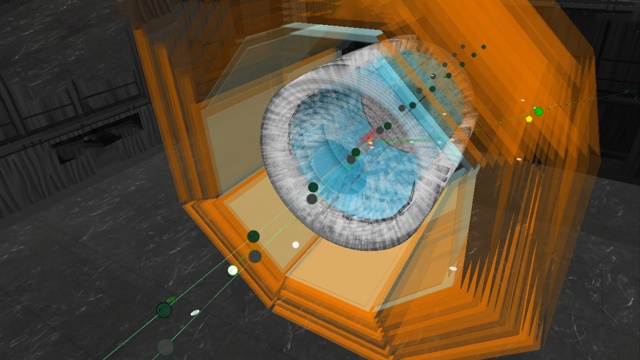Dark matter: on the trail of the Zʹ boson
Almost 1000 physicists from 26 countries have committed themselves to one collective task: using the Belle-2 experiment to search for signs of a new model of physics, a model that might explain, among other things, dark matter. This phenomenon, whose existence has been observed many times already, has stubbornly refused to be explained using the current standard model of physics. In the Belle-2 experiment, researchers collide electrons with their antiparticles, positrons (identical mass, but opposite charge), in the SuperKEKB accelerator in Tsukuba, Japan.
They hope to use these collisions to find traces of a new elementary particle, the Zʹ boson (pronounced: zee prime). The Zʹ boson is not included in the standard model. It would be used, however, if extensions to the theory of the electroweak interaction (which unifies the electromagnetic and weak interactions) prove to be correct. Or worded a little differently: if the Zʹ boson is found, that would be an important indication that we’re on the right path with the proposed extensions to the standard model.
The Zʹ boson has only a very short half-life. Therefore, it can only be detected indirectly in the Belle-II experiment. Theoretical models and numerical simulations suggest that the Zʹ boson could be revealed by interactions with muons, heavier relatives of electrons: if the researchers analyze the data from SuperKEKB and find an unusually high number of muon pairs with opposite charge and unexpected deviations in calculations of conservation of energy and momentum, that would be a significant indication for the existence of the Zʹ boson.
The team has now published their first results in the Physical Review Letters. These, however, did not produce any signs of the Zʹ boson. Now, however, the researchers can limit the mass and the coupling strength of the Zʹ boson (which describes how strong the force imparted by the boson is) with a previously unattainable accuracy. Thus, the Zʹ boson must be lighter than 6 GeV/c2; its sibling, the standard model’s Z0 boson discovered in 1983, is more than 90 GeV/c2.
“These initial results,” the researchers write in a press release, “come from the analysis of a small amount of data collected during the start-up phase of SuperKEKB in 2018. Belle II went into full operation on March 25, 2019. Since then, the experiment has been collecting data, while continuously improving the collision rate of electrons and positrons. If the experiment is adjusted perfectly, it will deliver considerably more data than in the recently published analyses. The physicists thus hope to gain new insights into the nature of dark matter and other unanswered questions.”
But what does the Zʹ boson have to do with dark matter? The researchers think it might act as a possible middleman between normal matter and dark matter. If it is produced by collision processes, it might also first break down into (still unknown) dark-matter particles.

